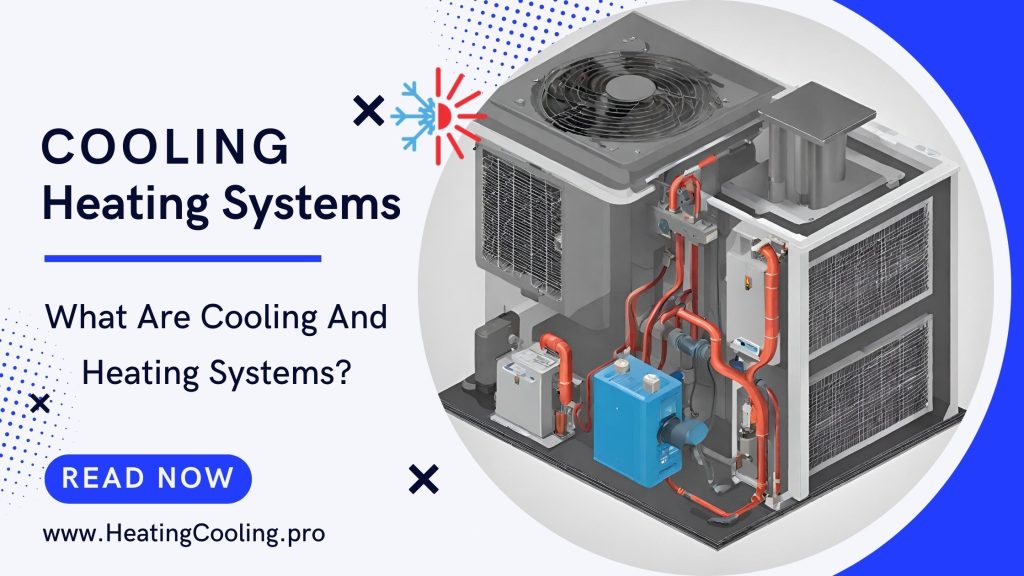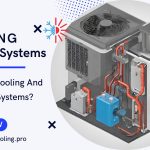In today’s fast-paced world, where the climate can be unpredictable, heating and cooling systems have become an essential part of our daily lives. These systems are the unsung heroes that keep us comfortable, no matter the weather outside. Whether you’re trying to escape the sweltering heat of summer or stay warm during the frosty winter months, understanding the world of cooling and heating systems is crucial.
In this article, we will delve into the fundamentals of these systems, exploring the different types available, how they work, and the benefits of keeping them well-maintained. So, let’s embark on this journey to discover the secrets behind a perfectly temperature-controlled environment. Heating and cooling systems are the unsung heroes that keep us comfortable, no matter the weather outside.
How Cooling Systems Work
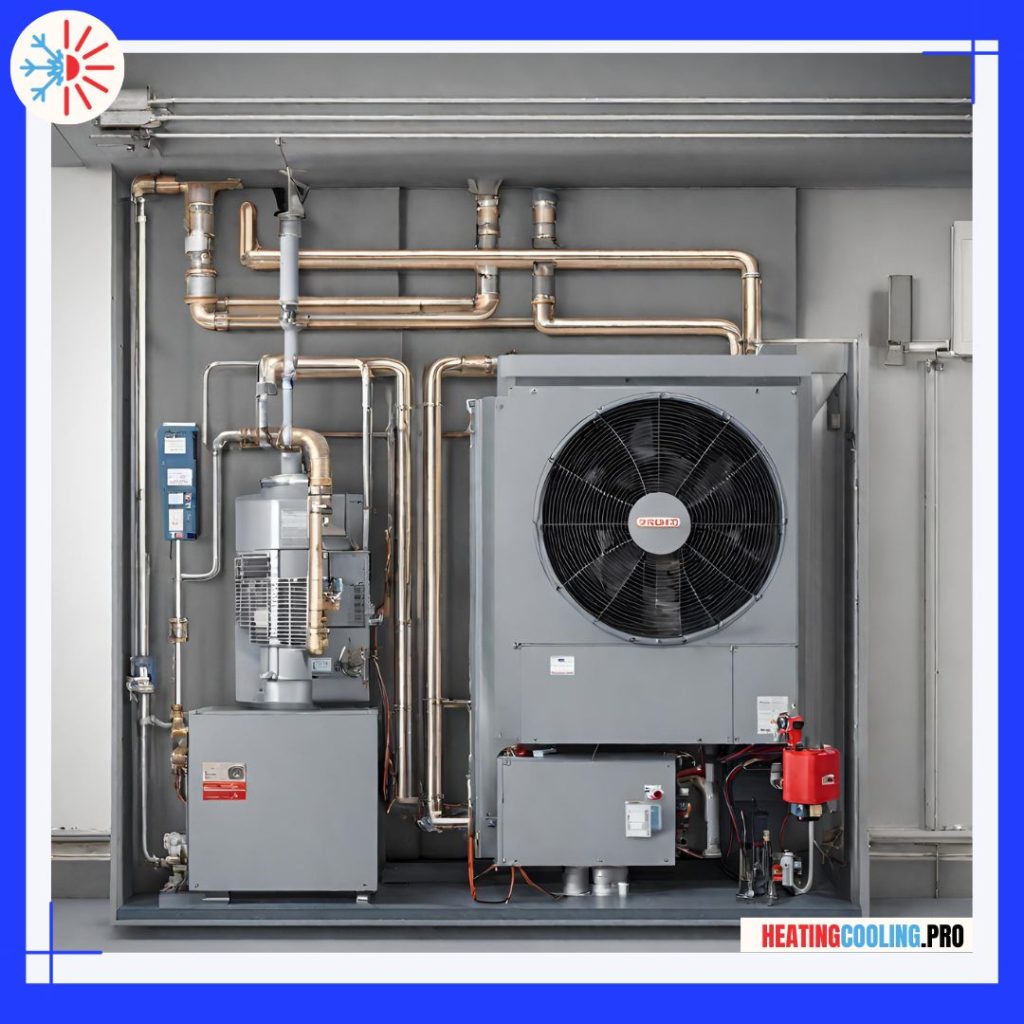
Cooling systems, often referred to as air conditioning systems, play a pivotal role in maintaining a comfortable indoor environment, especially during scorching summer days. They operate on a simple yet ingenious principle: removing heat from the indoor space and expelling it outside. Let’s delve into the mechanics of how these systems work.
The Refrigeration Cycle
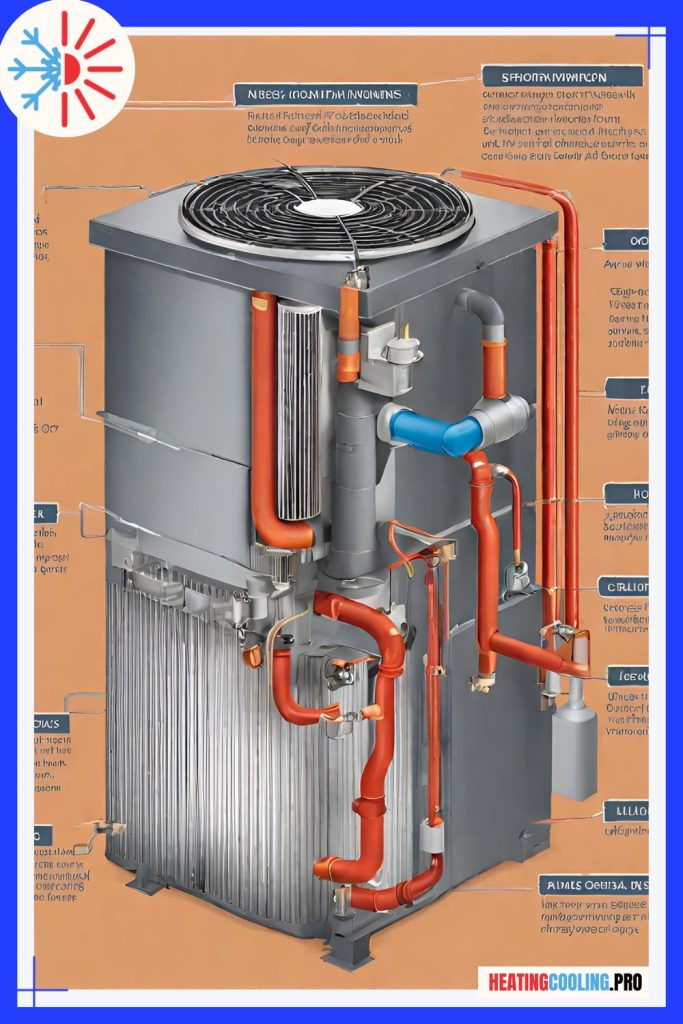
At the heart of most cooling systems is a remarkable process known as the refrigeration cycle. This cycle relies on a special fluid called refrigerant, which is responsible for absorbing and releasing heat. The refrigeration cycle consists of four main stages:
- Compression: The cycle begins with the compressor, which pressurizes the refrigerant, causing it to become hot and highly pressurized gas.
- Condensation: Next, the hot, pressurized gas moves to the condenser coil, usually located in the outdoor unit. Here, the refrigerant releases its heat, turning into a high-pressure liquid.
- Expansion: The high-pressure liquid then enters the expansion valve, where it rapidly expands. This causes it to cool down and transform into a low-pressure, cold liquid-gas mixture.
- Evaporation: The cold liquid-gas mixture circulates through the evaporator coil, situated inside your home. As warm air from your living space passes over the coil, the refrigerant absorbs the heat and evaporates, turning back into a low-pressure gas.
The cycle then repeats, continuously removing heat from your home and expelling it outdoors, which keeps your indoor space cool and comfortable.
Heat Exchange Process
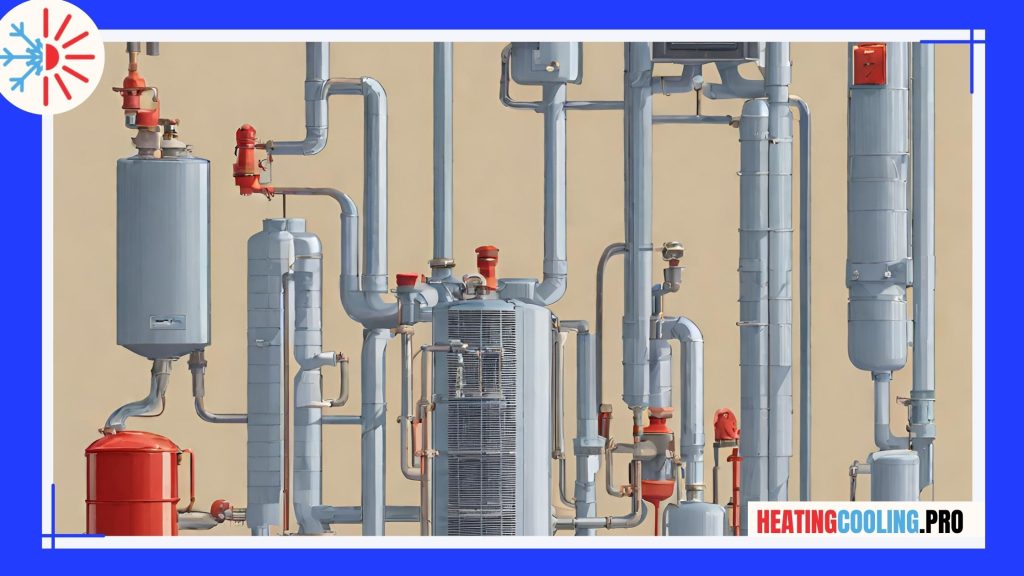
Cooling systems also use a heat exchange process. They work by transferring heat from the indoor air to the refrigerant and then expelling it outside. This process involves two main components: the evaporator coil (inside) and the condenser coil (outside).
- Evaporator Coil: This coil absorbs heat from the indoor air, cooling the air in the process. As the warm air passes over the coil, the refrigerant inside it absorbs the heat and transforms into a gas.
- Condenser Coil: Located in the outdoor unit, the condenser coil releases the heat absorbed from the indoor air. The refrigerant, now in a high-pressure liquid state, releases the heat outside, thus cooling down and preparing for another cycle.
Efficient heat exchange is crucial for a cooling system to work effectively. Proper maintenance, including cleaning coils and replacing air filters, helps ensure the system’s efficiency and longevity.
Importance of Proper Maintenance
Maintaining your cooling system is vital for its performance and longevity. Neglecting maintenance can lead to reduced efficiency, higher energy bills, and costly repairs. Regular tasks like cleaning or replacing air filters, inspecting refrigerant levels, and keeping the coils free from dirt and debris are essential to ensure your cooling system runs smoothly. Regular professional maintenance can catch and rectify issues before they become major problems, saving you time and money in the long run.
What Are Three Types Of Heating Systems?
Heating systems are diverse, offering various methods to keep your space warm and cozy. Let’s explore three common types of heating systems and their functionalities.
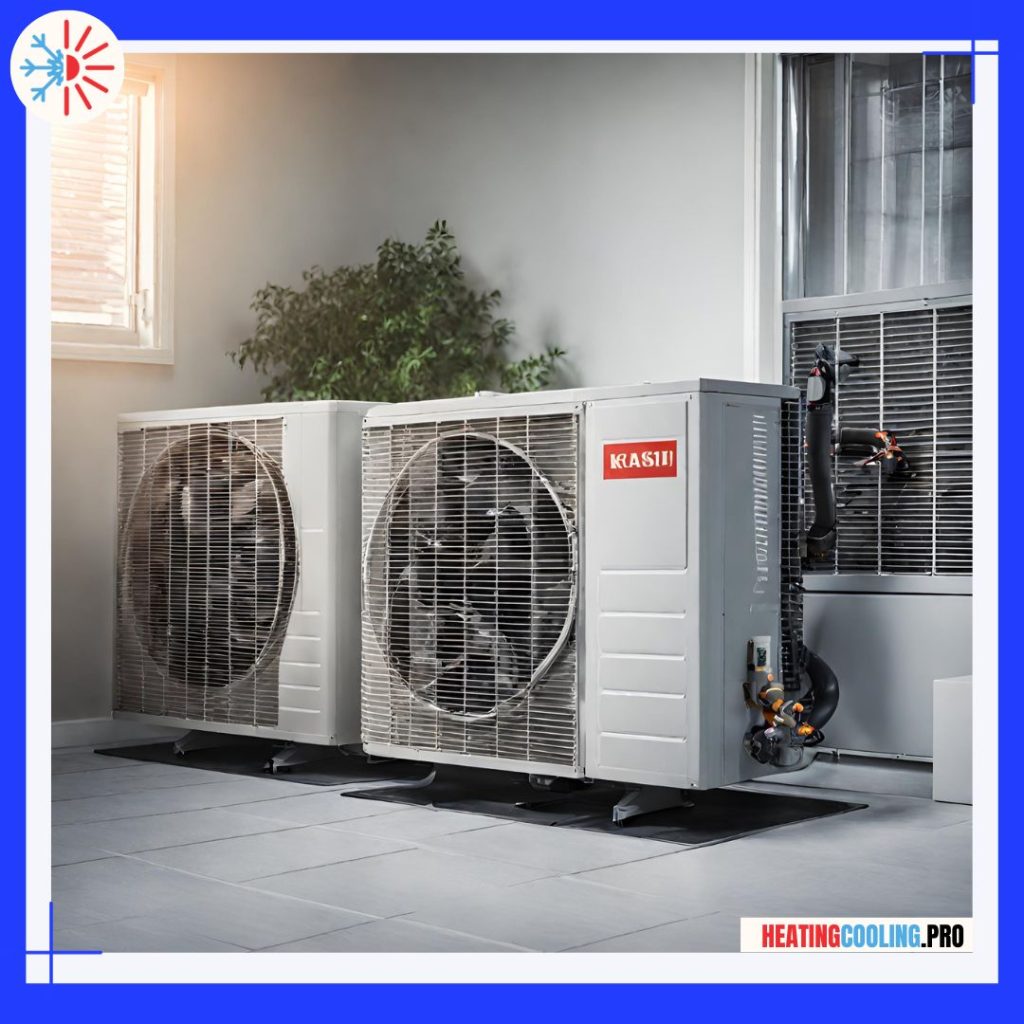
Furnaces
Furnaces are among the most prevalent heating systems in many homes. They work by blowing heated air through ducts that deliver warmth throughout the house via registers or grills. These systems can be powered by various sources like natural gas, propane, or electricity. Gas furnaces ignite burners that produce heat, whereas electric furnaces use heating elements.
Advantages of Furnaces:
- Efficient at quickly heating a home.
- Options for different fuel sources.
- Often more affordable to install compared to other heating systems.
Considerations:
- Regular maintenance is essential for safety and efficiency.
- Gas-powered furnaces require a supply of gas, which needs safety precautions.
Heat Pumps
Heat pumps are versatile systems that offer both heating and cooling functions. They operate by transferring heat from one place to another. During colder months, they extract heat from the outside air and pump it indoors. In warmer weather, this process is reversed, and they act as air conditioners by removing heat from indoor spaces and expelling it outside.
Advantages of Heat Pumps:
- Energy efficient as they move heat rather than generate it.
- Provide both heating and cooling functions, offering year-round comfort.
- Electrically powered, reducing reliance on fossil fuels.
Considerations:
- Less effective in extreme cold temperatures.
- Initial installation costs might be higher compared to some other systems.
Radiant Heating
Radiant heating systems deliver heat directly to the floors, walls, or ceilings of a house. They work by emitting infrared radiation, which warms up solid objects in a room, including people, rather than heating the air.
Advantages of Radiant Heating:
- Even heat distribution, avoiding cold spots in a room.
- Reduced energy consumption as they can operate at lower temperatures.
- Long-term cost savings due to increased efficiency.
Considerations:
- Installation costs might be higher, particularly for retrofitting existing homes.
- The system might take longer to warm up a room compared to forced-air systems.
Understanding the different types of heating systems can help homeowners make informed decisions when it comes to choosing the most suitable option for their specific needs and preferences. In the following section, we’ll delve into how these systems function and their efficiency levels to aid in making the best choice for your home.
Types of Cooling Systems
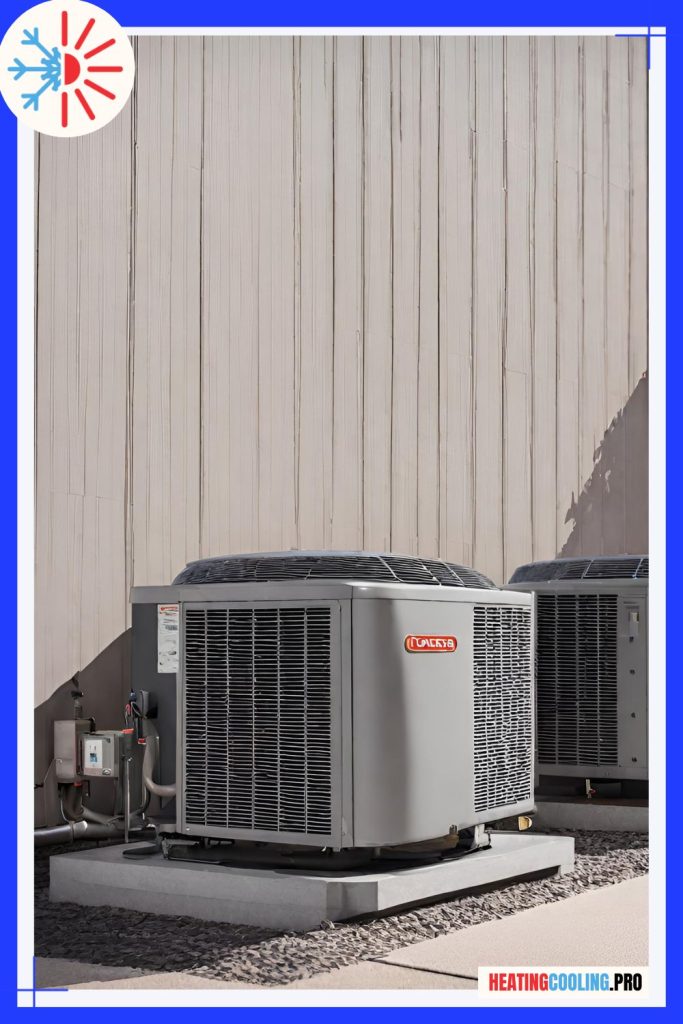
Cooling systems are designed to keep us comfortable during the sweltering summer months. They come in various forms, each with its unique features and advantages. Let’s explore the most common types of cooling systems available:
Central Air Conditioning
Central air conditioning systems are perhaps the most popular cooling option for larger homes and commercial spaces. These systems use a network of ducts and vents to distribute cool air evenly throughout the building. Here’s how they work:
- A central unit, often located outside, contains the compressor and condenser.
- Cold refrigerant is circulated through a series of indoor coils and ductwork.
- The cool air is then pumped into different rooms through vents, while warm air is returned to the central unit for cooling.
Advantages of Central Air Conditioning:
- Effective cooling for large spaces.
- Even temperature distribution.
- Integration with heating systems for year-round climate control.
Considerations:
- Requires professional installation.
- Ductwork maintenance is essential for efficiency.
Ductless Mini-Split Systems
Ductless mini-split systems offer cooling without the need for ductwork. They consist of an outdoor unit connected to multiple indoor air-handling units. Here’s how they work:
- The outdoor unit contains the compressor and condenser.
- Refrigerant lines connect the outdoor unit to the indoor units.
- Each indoor unit is installed in a specific room and can be individually controlled.
Advantages of Ductless Mini-Split Systems:
- Ideal for homes without ductwork.
- Zoned cooling for personalized comfort.
- Easy installation and minimal disruption.
Considerations:
- Initial cost can be higher than window units.
- More indoor units may require more maintenance.
Window and Portable Air Conditioners
Window and portable air conditioners are affordable and versatile cooling solutions for smaller spaces. Window units are installed in a window or a hole in the wall, while portable units can be moved from room to room. Here’s how they work:
- Both types contain a compressor, condenser, and evaporator.
- They draw in warm air from the room, cool it, and expel hot air outside.
- Window units are mounted in a window frame, while portable units use an exhaust hose to expel hot air.
Advantages of Window and Portable Air Conditioners:
- Cost-effective cooling for smaller areas.
- No professional installation required.
- Easy to move and store (portable units).
Considerations:
- Less effective for cooling larger spaces.
- May obstruct windows and require regular maintenance.
Evaporative Coolers
Evaporative coolers, also known as swamp coolers, are an eco-friendly and energy-efficient cooling option, ideal for dry, low-humidity regions. They work on a completely different principle compared to other cooling systems:
- Evaporative coolers use a fan to draw warm air through water-saturated pads.
- The air is cooled as it passes through the moist pads and is then circulated into the living space.
Advantages of Evaporative Coolers:
- Low energy consumption.
- Environmentally friendly operation.
- Economical and efficient in dry climates.
Considerations:
- Limited effectiveness in high-humidity areas.
- Require a constant water supply and maintenance of the cooling pads.
Understanding the different types of cooling systems and their features can help you choose the right solution for your cooling needs. In the following sections, we’ll delve deeper into how these cooling systems work and their advantages, allowing you to make an informed decision for your home or workplace.
What Is The Most Common Hvac Type?
The most common type of HVAC (Heating, Ventilation, and Air Conditioning) system used in residential and commercial buildings is a combination of central air conditioning and forced-air heating. This type of HVAC system is often referred to as a “split system” because it consists of two main components: an outdoor unit for cooling (the condenser) and an indoor unit for heating (the furnace).
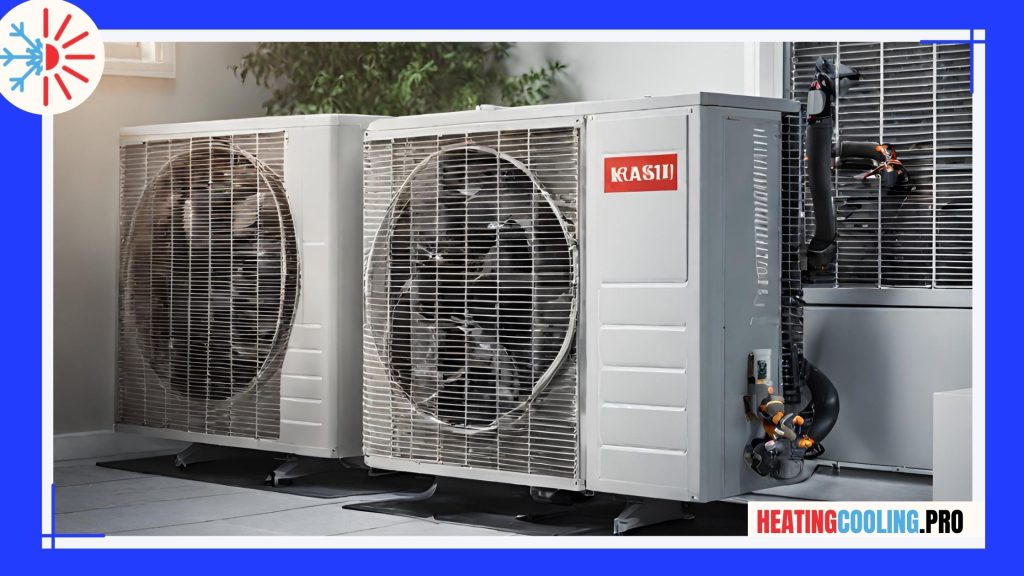
Here’s how this common HVAC system works:
- Cooling Function: During the warm months, the HVAC system functions as an air conditioner. The outdoor condenser unit contains a compressor and a condenser coil, which release heat from the indoor air to the outside. Refrigerant circulates between the indoor and outdoor units, cooling the air in the process. The cooled air is then distributed through the ductwork and into the rooms via vents.
- Heating Function: In colder months, the system switches to heating mode. The furnace, located indoors, uses a heat exchanger to warm the air. The blower fan circulates the warm air through the same ductwork and vents used for cooling.
This combination system offers year-round comfort, making it a popular choice for many households and businesses. It provides efficient cooling in the summer and effective heating in the winter, all through a single integrated system.
Advantages of Central HVAC Systems:
- Year-round climate control for heating and cooling.
- Even temperature distribution throughout the building.
- Integration with a thermostat for precise temperature regulation.
- Compatibility with various energy sources, including natural gas, electricity, and heat pumps.
However, it’s important to note that while this type of HVAC system is the most common, there are other options available, such as ductless mini-split systems, radiant heating combined with ductless cooling, and geothermal HVAC systems, each with its unique advantages and considerations. The choice of HVAC system depends on factors like the building’s size, layout, climate, and energy efficiency requirements.
Understanding your specific needs and considering the system’s efficiency, maintenance, and installation costs will help you determine the most suitable HVAC type for your home or commercial space.
What Kind Of Heat Is Hvac?
HVAC (Heating, Ventilation, and Air Conditioning) systems can utilize various types of heat sources to provide warmth, depending on the specific system and its components. The type of heat generated by an HVAC system can vary. Here are some common sources of heat used in HVAC systems:
- Forced-Air Heating: Many HVAC systems, especially in residential settings, use forced-air heating. These systems typically generate heat through the combustion of natural gas, propane, or electricity in a furnace. The warm air produced by the furnace is then circulated through ducts and distributed throughout the building via vents. This is a common method of providing heat in HVAC systems.
- Radiant Heating: Radiant heating systems use electric heating elements or hot water pipes to warm the floors, walls, or ceilings of a building. This type of heating creates radiant heat, which warms objects and people in the room directly, rather than heating the air. Radiant heating can be part of an HVAC system or used as a standalone heating solution.
- Heat Pumps: Heat pumps are a versatile component of HVAC systems, and they provide both heating and cooling. Heat pumps transfer heat from one location to another. In heating mode, they extract heat from the outside air or ground and release it indoors, creating warm air. In cooling mode, the process is reversed to expel heat from the indoor space. The heat generated in heating mode is typically electric heat.
- Boilers: In some HVAC systems, particularly in larger buildings and commercial settings, hot water or steam boilers are used as the heat source. These systems heat water or generate steam, which is then circulated through pipes and radiators to provide heating. Boilers are often powered by natural gas, oil, or electricity.
- Geothermal Heat Pumps: Geothermal HVAC systems use the consistent temperature of the earth to provide both heating and cooling. These systems utilize a heat pump and a ground loop system to extract or dissipate heat from or into the ground, depending on the season. The heat generated or absorbed in this process is typically used for heating.
The type of heat an HVAC system produces can vary based on factors such as the system’s design, energy sources, and the specific heating and cooling requirements of the building. The choice of heating method should align with the building’s size, climate, energy efficiency goals, and other relevant factors.
What Are The Different Types Of Heating And Cooling Loads?
When it comes to designing and operating heating, ventilation, and air conditioning (HVAC) systems effectively, it’s crucial to understand the various types of heating and cooling loads that buildings may experience. These loads are the demands placed on HVAC systems to maintain a comfortable indoor environment. They can be classified into several categories:
Sensible Heating and Cooling Loads
Sensible loads are associated with changes in temperature and humidity within a building. These loads are primarily related to the need for heating and cooling to maintain a comfortable temperature. Sensible heating loads include:
- Outdoor air temperature: The difference between the desired indoor temperature and the outdoor temperature necessitates heating or cooling.
- Solar gain: Sunlight entering the building can introduce significant heat gain. This can be managed through shading and window treatments.
- Occupant heat: The presence of people in a building generates heat. The number of occupants and their activities affect this load.
- Equipment and appliances: Heat-producing equipment, such as computers and cooking appliances, contribute to sensible cooling loads.
Latent Heating and Cooling Loads
Latent loads are related to changes in moisture levels in the indoor air. These loads involve the need to remove or add moisture to maintain appropriate humidity levels. Latent heating and cooling loads include:
- Outdoor air humidity: The moisture content of outdoor air affects the latent load when it enters a building. In humid climates, dehumidification is necessary to maintain comfort.
- Occupant moisture release: People exhale moisture when breathing, and this contributes to the latent load.
- Indoor plant transpiration: If there are indoor plants, they release moisture into the air, affecting humidity levels.
Understanding and calculating both sensible and latent heating and cooling loads are essential for proper HVAC system design and operation. Oversizing or undersizing HVAC systems can lead to inefficiency, discomfort, and increased energy costs. By considering all load factors, designers can create HVAC systems that efficiently control temperature and humidity, ensuring occupants’ comfort while minimizing energy consumption.
The different types of heating and cooling loads encompass both sensible and latent factors, including temperature differences, solar gain, occupant heat, equipment heat, outdoor humidity, occupant moisture release, and plant transpiration. Designing HVAC systems with these loads in mind is key to creating a comfortable and energy-efficient indoor environment.
Conclusion
Heating and cooling systems, often collectively referred to as HVAC (Heating, Ventilation, and Air Conditioning), are the unsung heroes that ensure our year-round comfort in homes, offices, and various indoor spaces. From combating the sweltering heat of summer to keeping us warm during the coldest winter nights, these systems have become integral to our modern way of life.
In this comprehensive guide, we’ve explored the fundamentals of heating and cooling systems, delving into the various types available and how they function. We’ve learned about the cooling systems, which range from central air conditioning to ductless mini-split systems, window and portable air conditioners, and evaporative coolers. Understanding how these systems work, including the refrigeration cycle and heat exchange processes, is essential for efficient operation.
Heating and cooling systems are essential components of our daily lives, providing us with the comfort and climate control we often take for granted. By understanding the various options available and the mechanics behind them, you can make informed decisions about selecting and maintaining the right HVAC system for your specific needs. These systems are not merely machines but integral parts of our modern living that make our homes and workplaces comfortable and welcoming.
